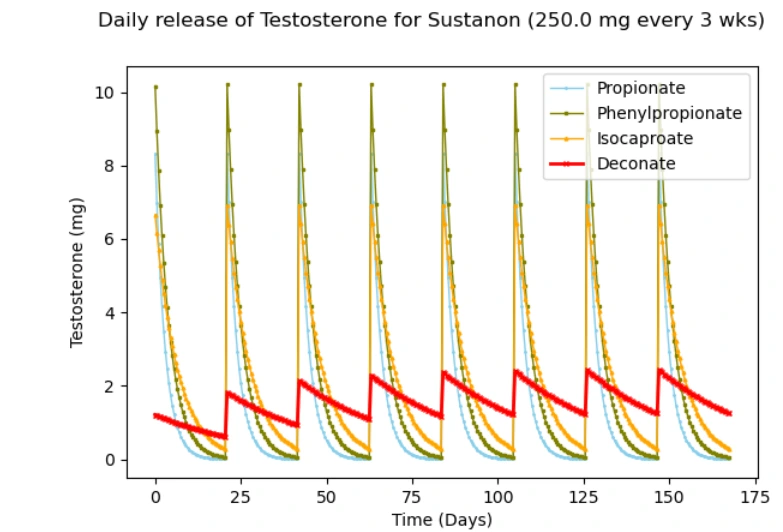Table of Contents
- Understanding Testosterone
- The Pharmaceutical-FDA Connection
- The Supermarket Analogy
- The Roller Coaster Effect of Weekly Injections
- Gels: Daily, But Still Fluctuating
- Testopel: A Smoother Option, but Still Synthetic
- ntical Testosterone Pellets: The Closest to Natural
- Is It Worth the Expense?
- Steady Release, Maintain Healthy Testosterone Levels, Natural Results

Understanding Testosterone
Testosterone is a vital hormone produced primarily in the testes in men, playing a crucial role in male development and characteristics. It influences muscle mass, bone density, and sex drive, and is also important for regulating mood and cognitive function. Testosterone levels change throughout life, peaking during adolescence and early adulthood, and then gradually decreasing by about 1% each year after age 30 or 40. This natural decline can affect various aspects of health, making it essential to understand and monitor your testosterone levels.
The Pharmaceutical-FDA Connection: Why Synthetic Testosterone is Covered
Synthetic testosterone products like Testim (a gel) and Testopel (a pellet) are widely available and covered by insurance because pharmaceutical companies have chemically altered the testosterone molecule, allowing them to patent and sell these products. Natural bioidentical testosterone cannot be patented, making it less profitable for large companies and harder to get covered by insurance.
“Why create synthetic testosterone when natural testosterone works just fine?”
“It’s all about money. Pharmaceutical companies can’t patent natural testosterone, so they create synthetic versions or tweak the delivery method to secure a patent. Once the FDA approves it, insurance steps in, and suddenly, what could have been a less expensive, natural option if paid for directly, becomes more expensive because insurance only covers the patented, FDA-approved synthetic product. Big Pharma profits, the FDA justifies its role, and patients end up paying more to pharmaceutical companies while natural products and compounding pharmacies, which may offer equally good or better solutions, are pushed to the sidelines.”
This system leaves men choosing between affordable, synthetic products that insurance will cover and natural bioidentical options that can cost significantly more out-of-pocket.
The Supermarket Analogy: Natural vs. Processed Hormones
Think of it like the difference between buying organic produce and packaged processed foods. The processed, mass-produced foods—like synthetic testosterone—are cheaper and more accessible. But the organic, natural foods—like bioidentical testosterone—are more expensive and harder to come by. They’re better for you, but they come at a cost.
“So bioidentical testosterone is like buying organic food?”
“Exactly. It’s more natural, but it’s harder to find and costs more.”

The Roller Coaster Effect of Weekly Injections
Weekly injections of synthetic testosterone are a common TRT method, but they often create a roller-coaster effect. Right after an injection, testosterone levels spike, leaving men feeling energetic and alert, but by the end of the week, levels drop sharply, leading to mood swings and fatigue. [Chart 4] shows the sharp peaks and valleys associated with weekly injections.
“I feel great after my injection, but by the weekend, I’m exhausted. Is that normal?”
“Yes, that’s the downside of weekly injections. You get a big boost right after, but then your levels drop quickly, leading to that emotional and physical crash.”
Gels: Daily, But Still Fluctuating
Daily testosterone gels, such as Testim, offer more frequent dosing, but even they lead to significant fluctuations in hormone levels.

This chart shows how daily gels provide peaks and troughs, making it difficult to achieve consistent symptom relief.
“I apply the gel daily, so why do I still feel up and down?”
“Even with daily application, testosterone levels can still fluctuate. It’s more frequent than injections, but it doesn’t give you the steady release you need for truly consistent results.”
It’s crucial for patients to discuss their medical history and any concerns with a healthcare professional to ensure shockwave therapy is a safe and appropriate option for them.
Testopel: A Smoother Option, but Still Synthetic
Testopel pellets provide a longer-lasting, smoother release of testosterone compared to injections or gels. However, Testopel uses synthetic testosterone, which, although similar, is not bioidentical to what your body naturally produces.

This chart shows that longer acting formulations offer a more stable release but are still prone to some degree of fluctuation.
“Is Testopel better than injections or gels?”
“It’s still synthetic testosterone. So, while the release is smoother, it’s not bioidentical.”
ntical Testosterone Pellets: The Closest to Natural
For men seeking the most natural and consistent option, bioidentical testosterone pellets are the clear choice. The pituitary gland plays a crucial role in regulating testosterone production, communicating with the testes to maintain hormone levels. These pellets, chemically identical to the testosterone your body naturally produces, provide a steady release over time.
Bioide

As this chart shows, pellets avoid the peaks and valleys seen with other methods and provide consistent symptom relief for months.
“What’s the big advantage of bioidentical pellets?”
“They give you two major benefits. First, the testosterone is identical to what your body produces, so it’s better absorbed and tolerated. Second, they release the hormone steadily over time, avoiding the highs and lows of other treatments.”
Is It Worth the Expense?
Here’s the downside: bioidentical testosterone pellets cost around $2400 per year, with about four procedures needed annually. Each procedure involves the insertion of a small, rice-grain-sized pellet in the buttocks, which is generally well tolerated. The question for many men is whether this investment is worth it.
“Is it really worth spending $2400 per year for bioidentical pellets?”
“It depends on your priorities. If you want smoother, more consistent testosterone levels and a hormone that’s bioidentical, then yes, it might be worth the investment. But it comes down to whether you value the steadier dose and natural hormone match.”
Steady Release, Maintain Healthy Testosterone Levels, Natural Results
The steady release of bioidentical testosterone pellets ensures that men can maintain consistent hormone levels without the emotional highs and lows caused by injections or gels. This steady release helps maintain healthy testosterone levels, which is crucial for overall health, including stable mood, energy, and sexual function. For men who prioritize stable mood, energy, and sexual function, bioidentical pellets may be worth the additional cost.
“So, with bioidentical pellets, I avoid the roller coaster effect?”
“Exactly. You get a slow, steady release that mimics your body’s natural production, which leads to more consistent results without the crashes.”
Is It Worth It for Decreased Testosterone Levels?
Ultimately, the choice between synthetic and bioidentical testosterone comes down to what matters most to you. If cost and insurance coverage are your main concerns, synthetic options like injections or Testopel might be more practical. However, if you want the closest match to your body’s natural hormone production—both in terms of molecular structure and a steady release—bioidentical testosterone pellets provide a smoother, more natural solution.
For men willing to invest in long-term health and consistency, the expense of bioidentical testosterone pellets may very well be worth it.
Peak Masculinity
Starts Here

By Dr. Ryan Welter
August 16, 2025




